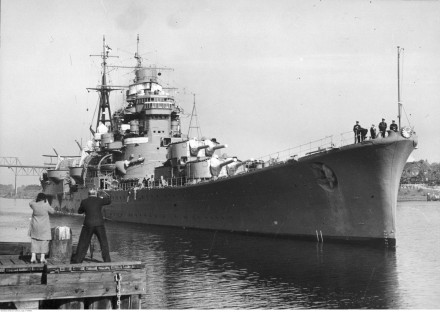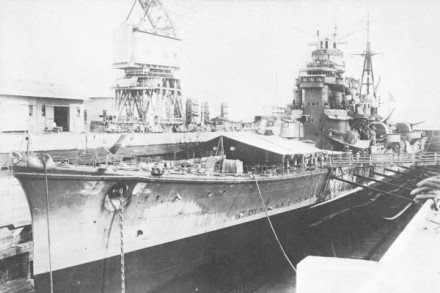History
The Ashigara was a Japanese cruiser. She was the last of the Japanese Myōkō class of heavy cruisers to be built. In World War II she took part in the invasion of the Philippines in December 1941. In the Battle of the Java Sea on March 1, 1942 she took part in the sinking of the cruiser HMS Exeter and the destroyer HMS Encounter.

On June 8, 1945, the Ashigara left Batavia for Singapore with 1600 troops on board, escorted by the destroyer Kamikaze. In the Bangka Strait the two ships came under attack from three Allied submarines, the Blueback, Trenchant and Stygian. The Kamikaze attacked the Trenchant with gunfire, forcing her to submerge, and then with depth charges, but Commander Arthur Hezlet spotted the Ashigara and fired eight torpedoes at her at about 12:15. The Ashigara was hit five times and capsized at 12:37. The Kamikaze rescued 400 troops and 853 crew, including the captain, Miura. Thus, over 1200 troops and 100 crew members died.
Description
Class and type: Myōkō-class cruiser
Armament: 10 × 203 mm (8.0 in) guns
6 × 120 mm (4.7 in) (to 1934) or 8 × 127 mm (5.0 in) (from 1935) guns
2 × 13 mm (0.51 in) machine guns
12 × 610 mm (24 in) torpedo tubes (1)
The ship carried an aircraft.
Crew: 920-960. She carried around 1600 troops at the time of her sinking.

| Master | Tomosaburo Miura |
|---|---|
| People on board | 1,700 |
| Speed | 35 knots ~ 40 mph (65 km/h) |
| Length | 668 ½ feet (203.8 m) |
| Draft | 16 ½ feet (5 m) |
| Beam | 62 ¼ feet (19 m) |
| Displacement | 14908 ton |
References
- Japanese cruiser Ashigara on wikipedia.
- Lacroix, Eric; Linton Wells (1997). Japanese Cruisers of the Pacific War. Naval Institute Press, pp. 808-809.